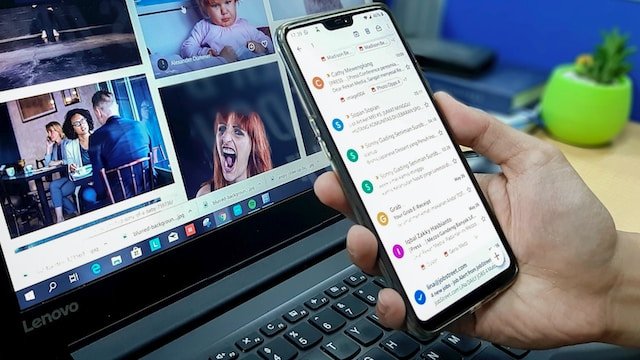How To Email A Professor About Waitlist?
I hope this message will find you in good health. I am inquiring about the situation of the waitlist for [Course Name and Course Code for the next semester. Since I am a person who is very interested in the subject, I would love to be a part of the class if it is made available. Would you be able to give me any updates or suggestions on the waitlist? I thank you for your patience and time.
How Can You Contact An Instructor Regarding A Follow-Up

The subject line of your email is the first impression. It must be concise and informative. Utilize keywords that are relevant to the message of your email. For example, “Follow-up Inquiry Regarding [Specific Topic]” or “Continuation of Discussion on [Previous Topic]” are subjects that express your message clearly.
Salutation and Addressing
Respectfully greeting your professor is vital. Begin by greeting them with formal salutations. Use the appropriate title and the last name, for example, “Dear Professor [Last Name].” If you’re uncertain about the correct designation, doing a simple web search or reference to the syllabus of your course can give you the information needed.
Reference the Previous Interaction
In the first paragraph, you should remind the professor about the last time you spoke to him. It could be a discussion in class or an email from a prior time, or even a conversation. Be succinct and precise in your references to help jog your memory.
Express Your Purpose Clearly
Continue to provide the reasons to follow up. Make sure you are concise and clear in explaining your reason. If you’re asking a question regarding an assignment, requesting further clarification, or discussing a potential research project, ensure that the message you’re attempting to convey is clear.
Provide Context if Necessary
If your follow-up question involves the subject of a complicated matter or a specific reference, provide some context in order to refresh your professor’s mind. This allows them to understand the context behind your question and help them respond better.
Be Polite and Respectful
When you send an email, ensure that you maintain a tone of politeness and respect. Use appropriate phrases like “I hope this email finds you well” and “Thank you for your time and consideration.” Remember that professors appreciate polite communication.
Ask Clear and Direct Questions
If the follow-up questions are related to your course, be sure to clearly state them. Bullet-pointed or numbered lists will make it easier to read and can help the professor answer every question with precision. Avoid using vague language, and make sure your questions are clear and precise.
Highlight the Relevance
Give reasons why your follow-up action is timely and relevant. If your concerns stem from the latest course content or discussions, make mention of this connection. Your engagement in the classroom will show your commitment to the subject.
Request a Convenient Time
If the follow-up needs a more detailed discussion, you might consider scheduling a time to meet. Give a few choices and ask whether any of them is suitable for your instructor. Flexibility and understanding show your dedication to the discussion.
Proofread and Edit
Before you send your email, make sure you proofread it thoroughly. Make sure you check for grammar errors, spelling, typos, and clarity. A well-written email shows professionalism and a keen eye for particulars.
Closing Remarks and Gratitude
Send your email out with a note that reaffirms your appreciation for the professor’s efforts and knowledge. A phrase such as “I look forward to your guidance” or “Your insights are greatly valued” shows your gratitude.
Signature
Make sure you sign off with a formal conclusion with a formal closing, such as “Sincerely” or “Best regards,” followed by your full name. If it is appropriate, add your ID as a student or the course’s details.
How Do You Courteously Send An Email To Your Professor

Before diving into the intricate details of writing emails, it’s important to know why polite communication is important. Professors are specialists in their disciplines and receive a lot of emails every day. To make your mark and ensure that your message gets the attention it deserves showing respect and professionalism is crucial.
Crafting the Perfect Subject Line
The subject line of your email is its first impression. Be concise, clear, and relevant to the content. For example, if you’re looking for clarification about the topic of your lecture, such as “Inquiry about Recent Lecture on [Topic],” draws the attention of the instructor and provides the context.
Salutations with Respect
Start the email by introducing a formal greeting and addressing the professor in a professional manner. Make use of titles such as “Dr.” or “Professor” and then their last names. If you’re not sure of the right name, an easy Internet search will provide you with the needed details.
Expressing Your Purpose Clearly
At the beginning of your email, make clear the reason for your email. It doesn’t matter if you’re asking questions or seeking advice, or addressing your assignment; this open approach allows your professor to comprehend your message immediately.
Providing Context

Explain the reason you’re contacting us. Include a context by referring to specific lessons, assignments, or discussions that led to your email. This helps the instructor remember the context but also shows your involvement with the subject matter.
Formulating Your Questions
If you have concerns you have, arrange them logically and succinctly. Lists with numbers or bullet points will improve accessibility. Be precise in your queries and show that you’ve given the time and effort into your inquiries.
Requesting Assistance
If you’re in need of assistance or guidance, be sure to communicate your requirements in a clear manner. It doesn’t matter if it’s about improving your knowledge of a complicated issue or seeking advice for more readings; professors value students who are committed to their studies.
Demonstrating Respectful Language
How you present your message can affect it very much. Use a formal, respectful tone throughout the email. Avoid jargon, slang, or excessively casual expressions. A professional tone will set the tone for a successful conversation.
Acknowledging Their Expertise
Show your appreciation for the knowledge and commitment of the professor to the subject. Honoring their work will show genuine interest and leave an impression that is positive.
Sign Off Professionally
Close your email professionally closing. “Sincerely” followed by your name is a popular option. If you’ve established a relationship with your teacher, alternatives such as “Best regards” or “Thank you” are also acceptable.
Proofreading and Polishing
Before clicking your send button, check your email for spelling and grammar mistakes. A professional email displays your commitment to accuracy and to effective communication.
Following Up
If you get a reply quickly, thank them in gratitude. If the email needs clarification, reply promptly. An exchange of messages shows your willingness to understand the subject.
How Do You Approach The Professor If They Are Available

Before contacting an academic, it’s essential to conduct thorough research regarding their publications, research, and specializations. This will not only show your genuine interest but allows you to tailor your message to match their needs. Start by checking out the personal page of your professor and reading their published work, and getting a better understanding of their research projects currently in progress.
Craft a Polite and Professional Email
Sending an email that is professional and polite is vital. Remember that professors are bombarded with emails every day, so making your subject line catchy and relevant is crucial. Introduce the professor with respect to their title and their last name. Introduce yourself in a short manner. Discuss how you stumbled upon their work and state your curiosity about their work.
Clearly State Your Purpose
Within your body, succinctly describe the goal of the email. Do you need advice regarding a particular research topic? Are you interested in discussing the possibility of collaboration? Be clear about your goals and provide enough details for your professor to comprehend the reason behind your request.
Highlight Shared Interests
Show your passion for the subject by highlighting areas of the work of the professor which align with your preferences. Highlight any common ground you’ve found, for instance, relevant conferences, publications, or research methods. This does not only demonstrate your commitment but also creates the connection between your research and that of your colleagues.
Suggest Potential Meeting Times
Respecting the professor’s schedule is essential. Provide a couple of specific timing options for your meetings in consideration of the busy schedule of their professor. It shows you appreciate your availability and will respect their schedule. Be sure to offer alternative times in the event that the first options aren’t feasible.
Keep the Email Concise
While it is essential to convey your goals clearly, try not to overload the instructor with too many details. Make your email brief and concise, and focus on the most pertinent information. The professors love conciseness since they can quickly understand the point of your email.
Polite Closing and Contact Information
Close your email with a courteous closing acknowledging their attention. Include contact details like the email address you use and your contact number so that they can contact you easily. Make sure you emphasize your excitement over the possibility of connecting.
Follow-Up Responsibly
If you don’t get any response within a reasonable period of time, you can send a follow-up mail. But, keep a calm tone and avoid being overly invasive. Professors are busy, So take your time and be patient.
Be Grateful for Their Time
No matter if the professor agrees to a meeting or not, make sure to thank them for their time. If they agree to a meeting, make sure you have a plan of questions and topics to discuss. Take advantage of their expertise and take advantage of the chance to learn from them.
FAQ’s
How should I start the email?
Begin with a polite and formal salutation. Use “Dear Professor [Last Name]” or “Hello Professor [Last Name],” to show respect and professionalism.
How should I introduce myself?
Briefly introduce yourself in the opening lines. Mention your name, the course you’re waitlisted for, and any relevant information like your major, year of study, or why you’re interested in the course.
How can I express my interest in the course?
Politely express your enthusiasm for the course and your eagerness to join if a spot becomes available. Explain why you find the course intriguing, how it aligns with your academic goals, and how you think it would benefit your studies.
Can I inquire about my position on the waitlist?
You can ask about your position on the waitlist, but do so respectfully. Politely ask if there’s any information available about your current status on the waitlist or if there’s an estimated timeframe for potential openings.
Is it appropriate to mention my qualifications?
If relevant, you can mention any qualifications or experiences that make you a suitable candidate for the course. Be humble and focus on how these qualifications align with the course content rather than coming across as boastful.
How should I conclude the email?
Close the email professionally by thanking the professor for their time and consideration. Use a closing like “Thank you for your attention” or “I appreciate your assistance.” Sign off with your full name and contact information.


















